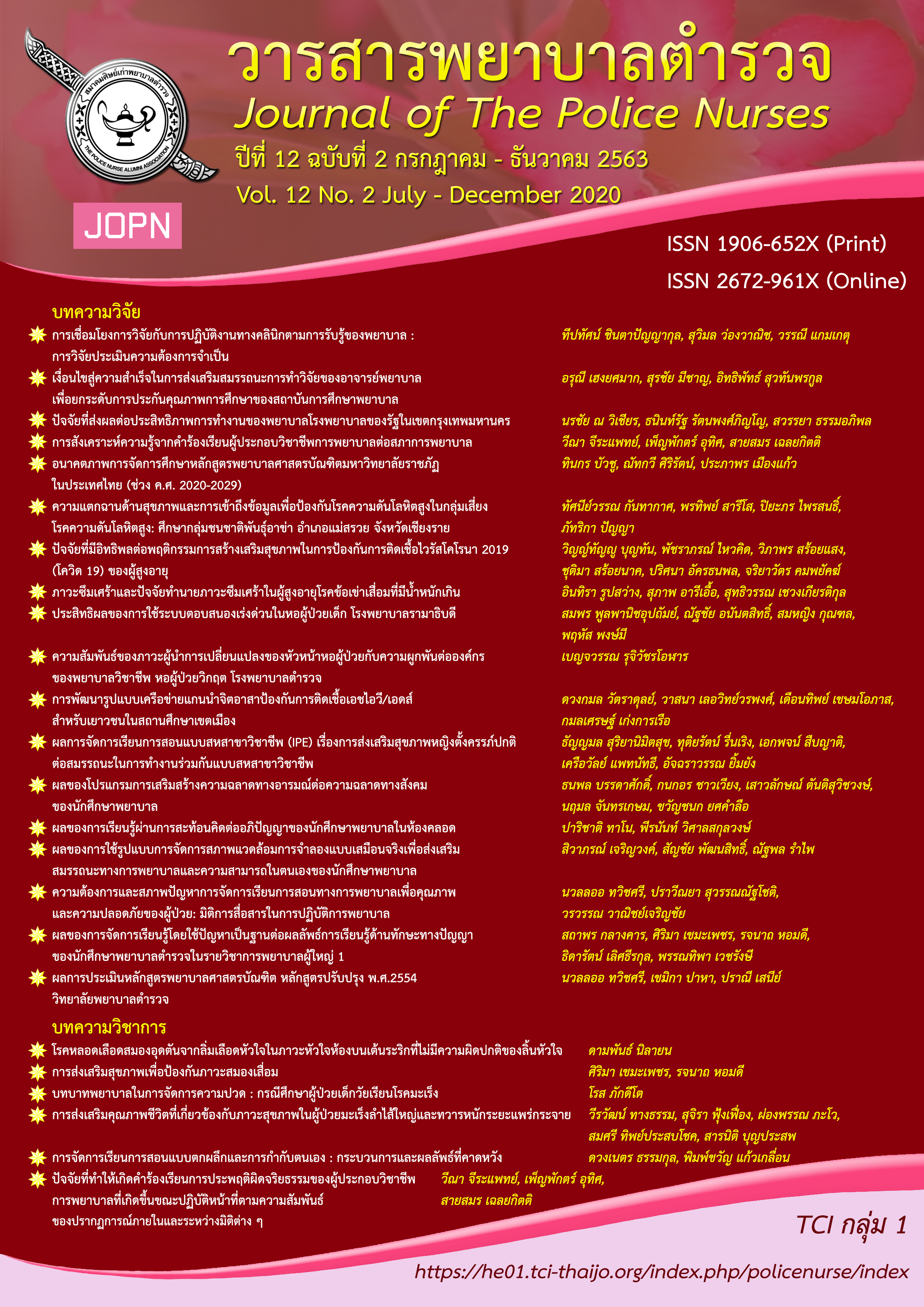HEALTH PROMOTION FOR PREVENTING DEMENTIA
Keywords:
health promotion, dementia, elderlyAbstract
Brain is a vital organ that controls the response to both inner and outer environments. Our Cerebrum has an important in thought, creativity, emotional regulation, memories, communication and movement. Moreover, it also controls basic activities such as talking, thinking, and eating. The brain deteriorates with increasing age. Thus, Dementia is usually found in the elderly. The common risk factors that have relevance to this condition include the increasing of age, genetics, smoking, alcohol consumption, too much protein ingestion, lacking essential vitamin that is necessary for the brain, dyslipidemia, diabetes mellitus, brain tumor, etc.. Therefore, prevention is significant and can be done by exercising, controlling weight, working out your brain, and taking a good quality of nutrients. Those who have dementia can participle in the rehabilitation processes, which are strengthening the brain for its thinking ability and developing the potential physical ability.
Downloads
References
Anothaisintawee T. (2014). Systematic review of dementia prevention in elderly. Foundation of Thai gerontology research and development institute (TGRI). Office of Health Promotion Fund.
Al-Zahrani, J. M. (2019). Prevention of dementia in elderly population: A comprehensive review of literature. Annals of Indian Psychiatry, 3(1), 14-18.
Carvalho, A., Rea, M., Parimon, T., & Cusack, B. J. (2014). Physical activity and cognitive function in the elderly: A systematic review. Clinical Interventions in Ageing, 9, 661-682. https://doi.org/10.2147/CIA.S55520
Chen, G-F., Xu, T-H., Yan, Y., Zhou, Y-R., Jian, Y., Melcher. K., & Xu, H. E. (2017). Amyloid beta: Structure, biology and structure-based therapeutic development. Acta Pharmacologica Sinica, 38, 1205-1235. doi:10.1038/aps.2017.28
Department of Elderly Affairs. (2019). Situation of the Thai elderly. Retrieved from https://www.dop.go.th
Department of Medical Service. (2019). Prevention of dementia. Retrieved from https://www.rajavithi.go.th
de Wit, L., O’Shea, D., Chandler, M., Bhaskar, T., Tanner, J., Vemuri, P., . . . Smith, G. (2018). Physical exercise and cognitive engagement outcomes for mild neurocognitive disorder: A group-randomized pilot trial. Trials, 19(1), 573.
Erickson, K. I., Hillman, C., Stillman, C. M., Ballard, R. M., Bloodgood, B., Conroy, D. E., . . . Powell, K. E. (2019). Physical activity, cognition, and brain outcomes: A review of the 2018 physical activity guidelines. Medicine & Science in Sports & Exercise, 51(6), 1242-1251.
Gouras, G. K., Olsson, T. T., & Hansson, O. (2015). ß-amyloid peptides and amyloid plaques in alzheimer’s disease. Neurotherapeutics, 12, 3-11. doi:10.1007/s13311-014-0313y
Honea, R., Thomas, G. P., Harsha, A., Anderson, H. S., Donnelly, J. E., Brooks, W. M., & Burns, J. M. (2009). Cardiorespiratory fitness and preserved medial temporal lobe volume in alzheimer's disease. Alzheimer disease and associated disorders, 23(3), 188-197.
Openstax College. (2013). Anatomy & physiology. RICE University: Texas.
Rolland, Y., Abellan van kan, G., & Vellas, B. (2010). Healthy brain aging: Role of exercise and physical activity. Clinics in geriatric medicine, 26(1), 75-87.
Thaneerat, T., Tooreerach, U., Petrugs, B., Kimsao, P., Hongchukiet, K., & Deeduang, B. (2560). Development of dementia screening test for Thai elderly. Journal Psychiatric Association Thailand, 62(2), 177-186.
Downloads
Published
How to Cite
Issue
Section
License
ผลงานที่ได้ตีพิมพ์แล้วจะเป็นลิขสิทธิ์ของวารสารพยาบาลตำรวจ















